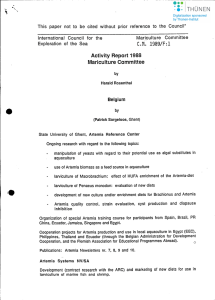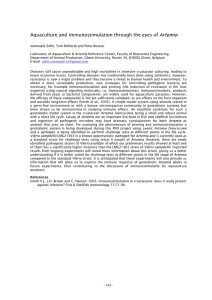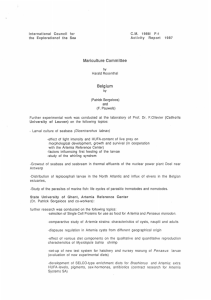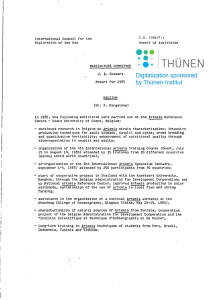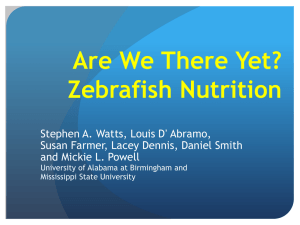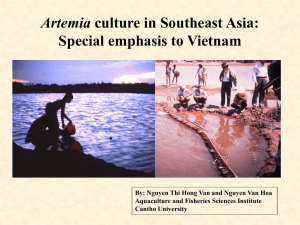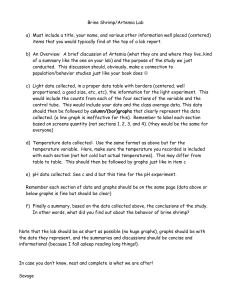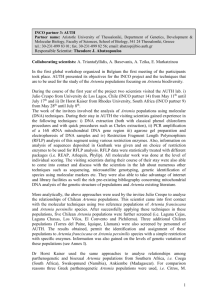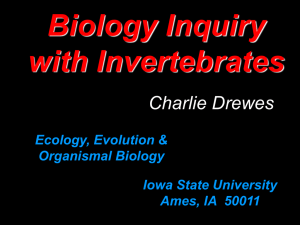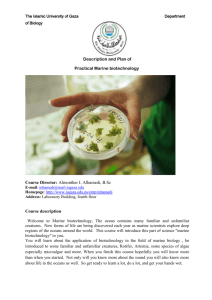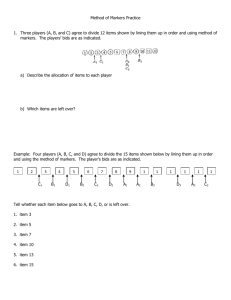ARTEMIA FRANCISCANA
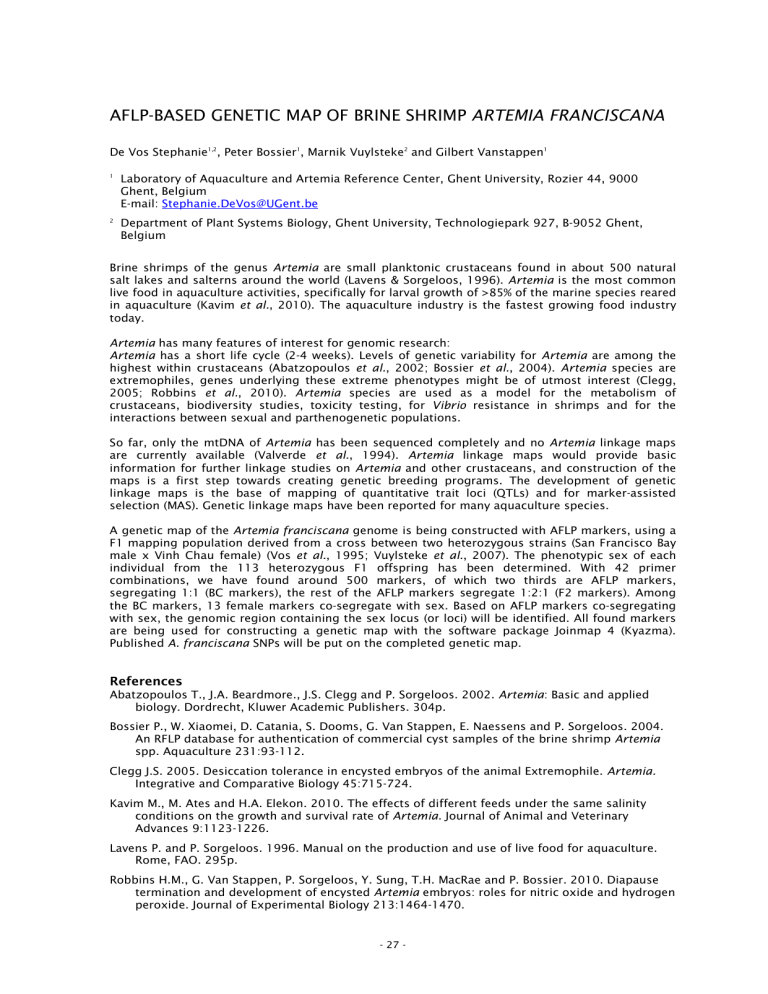
AFLP-BASED GENETIC MAP OF BRINE SHRIMP ARTEMIA FRANCISCANA
De Vos Stephanie 1,2 , Peter Bossier 1 , Marnik Vuylsteke 2 and Gilbert Vanstappen 1
1 Laboratory of Aquaculture and Artemia Reference Center, Ghent University, Rozier 44, 9000
Ghent, Belgium
E-mail: Stephanie.DeVos@UGent.be
2 Department of Plant Systems Biology, Ghent University, Technologiepark 927, B-9052 Ghent,
Belgium
Brine shrimps of the genus Artemia are small planktonic crustaceans found in about 500 natural salt lakes and salterns around the world (Lavens & Sorgeloos, 1996). Artemia is the most common live food in aquaculture activities, specifically for larval growth of >85% of the marine species reared in aquaculture (Kavim et al.
, 2010). The aquaculture industry is the fastest growing food industry today.
Artemia has many features of interest for genomic research:
Artemia has a short life cycle (2-4 weeks). Levels of genetic variability for Artemia are among the highest within crustaceans (Abatzopoulos et al.
, 2002; Bossier et al.
, 2004). Artemia species are extremophiles, genes underlying these extreme phenotypes might be of utmost interest (Clegg,
2005; Robbins et al.
, 2010). Artemia species are used as a model for the metabolism of crustaceans, biodiversity studies, toxicity testing, for Vibrio resistance in shrimps and for the interactions between sexual and parthenogenetic populations.
So far, only the mtDNA of Artemia has been sequenced completely and no Artemia linkage maps are currently available (Valverde et al.
, 1994). Artemia linkage maps would provide basic information for further linkage studies on Artemia and other crustaceans, and construction of the maps is a first step towards creating genetic breeding programs. The development of genetic linkage maps is the base of mapping of quantitative trait loci (QTLs) and for marker-assisted selection (MAS). Genetic linkage maps have been reported for many aquaculture species.
A genetic map of the Artemia franciscana genome is being constructed with AFLP markers, using a
F1 mapping population derived from a cross between two heterozygous strains (San Francisco Bay male x Vinh Chau female) (Vos et al.
, 1995; Vuylsteke et al.
, 2007). The phenotypic sex of each individual from the 113 heterozygous F1 offspring has been determined. With 42 primer combinations, we have found around 500 markers, of which two thirds are AFLP markers, segregating 1:1 (BC markers), the rest of the AFLP markers segregate 1:2:1 (F2 markers). Among the BC markers, 13 female markers co-segregate with sex. Based on AFLP markers co-segregating with sex, the genomic region containing the sex locus (or loci) will be identified. All found markers are being used for constructing a genetic map with the software package Joinmap 4 (Kyazma).
Published A. franciscana SNPs will be put on the completed genetic map.
References
Abatzopoulos T., J.A. Beardmore., J.S. Clegg and P. Sorgeloos. 2002. Artemia : Basic and applied biology. Dordrecht, Kluwer Academic Publishers. 304p.
Bossier P., W. Xiaomei, D. Catania, S. Dooms, G. Van Stappen, E. Naessens and P. Sorgeloos. 2004.
An RFLP database for authentication of commercial cyst samples of the brine shrimp Artemia spp. Aquaculture 231:93-112.
Clegg J.S. 2005. Desiccation tolerance in encysted embryos of the animal Extremophile. Artemia.
Integrative and Comparative Biology 45:715-724.
Kavim M., M. Ates and H.A. Elekon. 2010. The effects of different feeds under the same salinity conditions on the growth and survival rate of Artemia . Journal of Animal and Veterinary
Advances 9:1123-1226.
Lavens P. and P. Sorgeloos. 1996. Manual on the production and use of live food for aquaculture.
Rome, FAO. 295p.
Robbins H.M., G. Van Stappen, P. Sorgeloos, Y. Sung, T.H. MacRae and P. Bossier. 2010. Diapause termination and development of encysted Artemia embryos: roles for nitric oxide and hydrogen peroxide. Journal of Experimental Biology 213:1464-1470.
- 27 -
